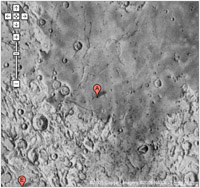A little bit ago, I wrote a piece about how a new start-up, Bit.ly, was ignoring the wishes of web content producers by creating cached copies of pages that are explicitly marked (by those same content producers) with headers directing that they not be cached. So here we are, three weeks later, and it crossed my mind that maybe Bit.ly had fixed the problem… and disappointingly, they appear to still not give a flying crap. (That’s their cached version of this page, a page that couldn’t make itself any clearer that it’s not to be cached.)
I hate to push this to the next level, but is it time to drop Amazon a DMCA notice saying that the page is copyrighted (as all works are, once they’re fixed in a tangible medium) and is being hosted on Amazon’s network?
(And one other thing: how annoying is it that when Bit.ly’s caching engine makes its page requests, it doesn’t send any user agent string, so it’s literally impossible for a website owner to identify the Bit.ly bot programmatically? They appear to be running the caching engine off of an Amazon EC2 instance, as well, so there’s not even a way to watch for a known IP address — it’ll change as they move around the EC2 cloud. Nevermind pissing in the pool; the Bit.ly folks are out-and-out taking a dump in the pool.)





